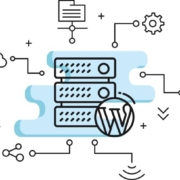Customizing Hostiko WordPress Hosting Themes and WHMCS Themes for Client Portals
In today’s competitive hosting landscape, client experience is everything. Whether it’s onboarding new users, providing support, or offering billing access, the client portal is the core of your customer interaction. With Hostiko’s powerful WordPress hosting themes and WHMCS templates, you get full control to create a professional, branded, and user-friendly portal that builds loyalty and trust from day one.
This article explores how to customize your Hostiko WordPress and WHMCS themes specifically for client portals that look great and function even better—ensuring seamless communication between your brand and your customers.
Why Client Portal Customization Matters
Your client portal isn’t just a utility—it’s a representation of your hosting brand. A poorly styled or cluttered portal can result in customer frustration, lost sales, or even increased support tickets. On the other hand, a well-branded and intuitive portal experience builds trust and keeps customers coming back.
With Hostiko’s themes, you gain a unified design language across both the front-facing WordPress site and the functional WHMCS backend. Customizing them ensures that every point of interaction reflects your unique brand and delivers convenience at scale.
Step 1: Align Your Branding Across WordPress and WHMCS
The first step in portal customization is maintaining visual consistency. Your WordPress hosting theme from Hostiko can be customized using Elementor or any modern page builder. Change your colors, fonts, logo, and layout to match your brand’s tone—whether minimal, tech-forward, or playful.
Then, use Hostiko’s WHMCS templates to mirror those same visual elements. Because Hostiko themes are pre-matched, aligning both systems is simple. Adjust:
- Header and footer designs
- Font styles and color palette
- Menu structure and icons
- Login and registration forms
This consistency across the client journey reinforces brand credibility and makes users feel secure and confident as they interact with your platform.
Step 2: Streamline Navigation for Your Client Base
Clients log in to their portal expecting one thing: efficiency. Hostiko WHMCS themes come with well-organized layouts, but tailoring navigation to your specific offerings can further enhance usability.
Reorganize dashboard menus to prioritize frequently used actions like:
- Viewing or paying invoices
- Managing domains or services
- Submitting support tickets
- Updating account details
Hide unused features to minimize clutter and use tooltips or help icons to provide context. Consider implementing a quick-access sidebar or a collapsible mobile menu—both of which are easy to implement with Hostiko’s responsive templates.
Step 3: Add Custom Pages and Widgets
If you want to go beyond default WHMCS functionality, Hostiko themes support custom widgets and pages. You can add value-added features such as:
- Announcements or system status updates
- Quick-start onboarding guides
- Video tutorials or walkthroughs
- Affiliate program dashboards
- Loyalty or rewards program tracking
Because Hostiko WHMCS themes are built with modern coding standards, adding these elements is straightforward using basic PHP/HTML or WHMCS hooks. You can even embed WordPress content directly into WHMCS pages using iframes or API-powered dynamic blocks.
Step 4: Integrate Support Seamlessly
Support access is one of the most important features of any client portal. Hostiko themes come with a pre-styled support ticket system, knowledge base integration, and contact forms. But you can enhance the experience by:
- Highlighting support hours on the dashboard
- Embedding FAQ blocks next to high-touch sections
- Auto-suggesting articles from your knowledge base
- Displaying ticket response time estimates
This allows clients to find help faster—and reduces the load on your support team.
Step 5: Mobile Optimization for On-the-Go Clients
Many users will access your portal from mobile devices. Hostiko’s responsive design ensures that all themes work smoothly on smartphones and tablets, but you should still check your client portal for real-world usability.
Simplify form fields, make buttons large enough to tap easily, and streamline checkout or renewal flows for mobile. Your Hostiko WHMCS and WordPress themes are designed to adapt—but your customization choices will determine how seamless the mobile experience truly is.
Step 6: Track and Iterate Based on Usage
Once your portal is live, monitor how clients interact with it. Hostiko themes can be integrated with analytics tools like Google Analytics, Hotjar, or Matomo for both WordPress and WHMCS.
Pay attention to metrics such as:
- Most visited pages
- Abandonment points
- Frequent support topics
- Mobile vs. desktop usage
These insights help you identify friction points and continue optimizing your portal experience.
Conclusion: Deliver a Branded, User-First Portal with Hostiko
Your client portal is your digital handshake. With Hostiko’s matching WordPress hosting themes and WHMCS templates, you’re not just launching a website—you’re creating a full-service customer experience designed to scale.
By investing in portal customization, you can enhance trust, improve client satisfaction, reduce support load, and boost retention—all while presenting your brand exactly how you envision it.
Ready to create a client experience that stands out?
Explore Hostiko WordPress and WHMCS themes today at hostiko.com and start building a client portal that drives satisfaction, retention, and growth.

